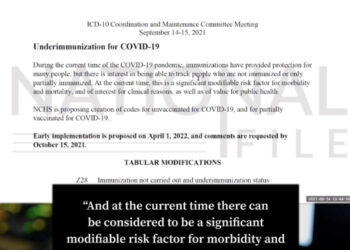Last Updated on December 14, 2020
As President Donald Trump is expected to receive an unexpected number of Electoral College votes from states with ongoing controversies and contests relating to the 2020 presidential election, the opportunity is rapidly approaching for both Vice President Mike Pence and the Republican-led Senate to, with help from Rep. Mo Brooks (R-AL) in the South, deny the Electoral College votes of battleground states with suspicious or fraudulent election results.
As National File exclusively reported today, officials have confirmed that an effort is underway in Georgia, Pennsylvania, Nevada, and other states to send a slate of presidential electors intending to vote for President Donald Trump.
This opens the door for a Constitutional event that has not been seen since 1876, as National File previously noted.
National File spoke exclusively to constitutional lawyer Ivan Raiklin today, who previously outlined much of what is happening now, to learn more about what will likely unfold.
According to Raiklin, on January 6, when the Congress enters into a joint session, under which Pence presides, states’ Electoral College votes will begin being counted in alphabetical order.
When Arizona is reached, a sitting U.S. Representative, likely Rep. Mo Brooks (R-AL), who has already indicated he will do this, is able to object. If a sitting U.S. Senator agrees, with experts suggesting Sen. Ted Cruz (R-TX), Sen. Rand Paul (R-KY), or Sen. Ron Johnson (R-WI) are all likely candidates, then the objection has met the “legal minimum requirement” and will be noted.
At this point, the U.S. Senate will break off from the joint session to deliberate on the objection and determine whether to accept the slate from Arizona. The Senate, which will ostensibly still be held by a Republican majority on January 6, can then choose along party lines not to accept the electoral slate from Arizona.
Meanwhile, the House, led by Speaker Nancy Pelosi (D-CA), will accept the original electors from Arizona. Pence would then serve as the tie breaking vote, refusing to accept the original Arizona electors.
This process could continue for every contested state, until neither President Trump nor Joe Biden have secured the requisite number of electoral votes.
https://twitter.com/Raiklin/status/1338466226058694659
One likely scenario is for Congress to eventually confirm 232 electoral votes for President Trump, and 227 for Biden. At this point, says Raiklin, the 12th Amendment comes into play, as a contingent election in the House of Representatives will be required to determine the next president.
“In choosing the president, votes shall be taken by states,” said Raiklin. “Meaning each state has one vote for president.”
While the House of Representatives has more representatives based on population, there are currently 27 states that have sent Republican representatives to the House, and 20 states that have sent Democratic representatives to the House. Three states have an even split.
In a contingent election, Republican states would then vote for President Trump, with Democrat states voting for Biden. President Trump would likely win this scenario by 7 states.
While this scenario may seem unlikely, Raiklin points out that there is evidence this process is already underway in the U.S. Senate.
https://twitter.com/Raiklin/status/1338200903388631046
Raiklin notes, however, that “Pelosi could try to block the Joint Hearing & kick senate out to prevent Pence from Presiding” in a naked display of partisanship.





















